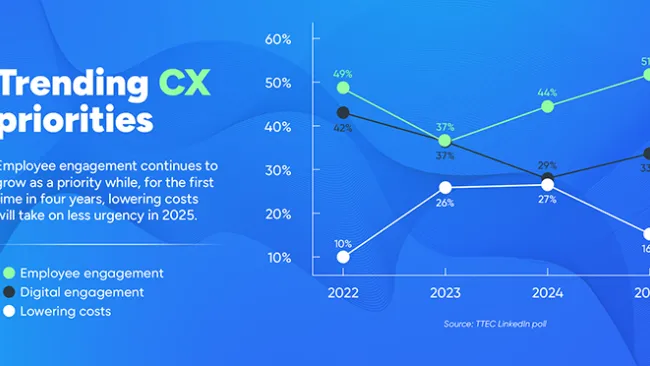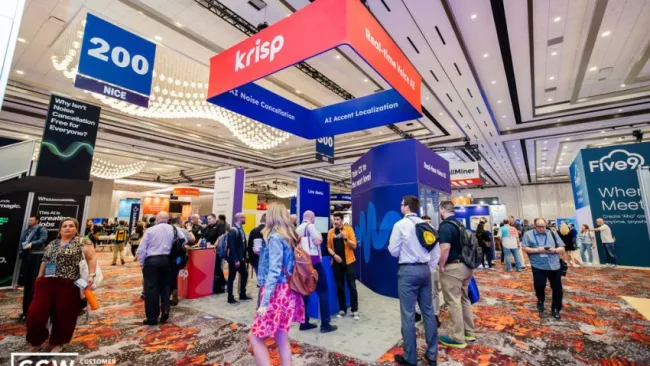A record 4 million people quit their jobs in the spring, reported the Department of Labor. There are lots of reasons so many workers are seeking new jobs—a trend that economists are calling the Great Resignation. For some people, the COVID-19 pandemic triggered a shift in priorities, spurring them to pursue a “dream job,” or become stay-at-home parents. But for others, the decision to resign was in response to how their employer treated them during the pandemic.
Heather Younger, author, CEO, and founder of Employee Fanatix, an employee engagement, leadership development, and consulting firm, explains why employee retention is more critical than ever. We spoke with Younger to learn what employers should do—and not do—to retain talented and valuable employees. This interview has been lightly edited and condensed for clarity.
Customer Strategist: Why are so many people quitting their jobs at this time, and what does it mean for employee retention?
Heather Younger: There are myriad reasons why people are leaving, but I think a major factor is that many people became comfortable working from home and their employers reassured them that it was fine. And so now, when employers are looking at the amount of real estate that they have and informing employees that it’s time to come back to the office, employees would rather resign and find another job that’s a better fit.

Customer Strategist: You wrote a book, The Art of Caring Leadership. Can you share the definition of caring leadership and how it benefits businesses?
HY: Caring leadership is taking daily actions to show concern and kindness to those you lead. It's behaviors, it's actions—it's not just the words or what we think we are. The strategies that I talk about in the book aren't new. They're just restated and based upon evidence. A few of the strategies are based on this idea of leading the whole person. This is a big one and it's even more important because of the pandemic. We learned so much about those that we lead that we didn't know when we were physically together in the workplace.
Now, we go onto these Teams calls and these Zoom meetings, and we see each other’s home environments. Employees might even feel more comfortable telling us more about their mental health or about their aging parent. So, this idea of ‘leading the whole person’ is really critical. It was already important, but now it's even more so because employees know that leaders know more about them and they expect them to show empathy, compassion, and connect with them at deeper levels. And if we can't give that to them because we don't have the desire or willingness to, we're going to lose them.
Customer Strategist: What changes in the workplace do you think are temporary and which ones are more likely to remain for the long run?
HY: That one's hard. Some of it is driven by what employee demand is but…I think it's going to depend on how much companies are in it for the long haul. Also, is the board driving [changes in the workplace]? Is the market driving it? Are the changes financially justified? Organizations are driven by profits and the need to make money. Something I really want to highlight here is you can show care and make money at the same time. But I think in the end, it's going to be driven by a lot of factors, including some that are outside of an employer’s control.
Customer Strategist: What common trends are you seeing in what employees are looking for in their new workplace? What do they want now?
HY: What I alluded to earlier was that there was actually quite a bit more connection that was going on during the pandemic. We almost had no choice but to learn about and get to know our employees. When I say we, I'm talking about the kind of organizational leaders who have the power to change the employee and the customer experience. These are both tied together. And in this case, we had no choice but to see and get to know our employees and customers, because we wouldn't get anything done if we didn't. So, we had to learn to show empathy and compassion. We had to ask good questions. We had to lean in to listen to stories and to listen to scenarios. And we had to learn to jump into action, to help, or again, we wouldn't achieve any goals.
It was an environment that just required it. So, I think what our team members realize is that's the kind of place they want. They want to have that connection [with an employer], and they want their leaders to ask them questions and lean in with empathy and compassion. And so that puts leaders in a position where now, there's a lot of reinvention on their part and they have to figure out how to avoid compassion fatigue, how not to overdo themselves, and find that proper balance between [making demands] and showing compassion.
Customer Strategist: This reminds me of business leaders who believe surprising and delighting customers is the best way to increase loyalty when showing that you understand the customer is actually more important. Is the same true for employees?
HY: Yes, absolutely. I do think it's about understanding and consistency. Surprise and delight are nice, but if it only happens once and there are a whole bunch of other things that aren't delighting [employees], the interplay or the net result is not going to be as positive. It's about understanding them. Leaning into what employees’ needs are and then being consistent. And when employers do mess up, it’s about admitting their mistake and asking, what can we do to make the experience better? It's the exact same interplay, whether it's the external customer or the internal customer.
Customer Strategist: Are there any pitfalls to companies doing more to retain their employees?
HY: I think the biggest thing is that not everybody's built to lead with empathy and compassion. They're just not naturally there. And so, the pitfalls would be, like I said, becoming fatigued. It's starting to drag some [leaders] down because it's not who they naturally are. Organizations are made up of people and everyone differs in how they communicate, how they behave, how they understand people, how they need to be understood.
And so, understanding that all of those things are going on... it's not really a downfall as it is more of the complexity involved. How do we now manage this new kind of leadership realm where now I have to lean in further, do even more to consider the whole person more so than I did before and the impact it has on me emotionally, because I wasn't prepared to do that before. So, I think that would be one of the things that we would see.
Customer Strategist: So, in order for businesses to thrive and retain their employees, they need to communicate with their employees to understand what their needs and expectations are, be consistent in their strategy and their interactions, and be flexible—is that correct?
HY: Yes, I would say those would be the three really big things they’ll have to do. And when I talk about listening strategy too, it's a multi-focus thing; it involves making sure that you're acting upon what you hear and that you communicate back to the people who lent their voices to you, to give you their feedback. You're communicating back to them about what it is you plan to do, what you've done and how it relates to what they told you they wanted. Leaders should constantly be doing that.
I would say that this new way of leading in the next three to five years is probably going to take a lot more energy on the part of leaders. Passive leadership will no longer be allowed. It's no longer going to produce results that we want. We're going to have to be very actively engaged, super focused on the pulse, and lean in a lot more than we did before in order to get what we want.

















